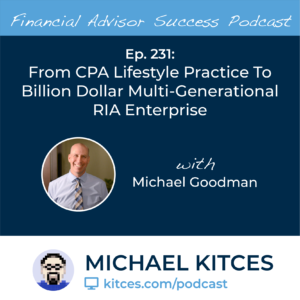When investments appreciate in value, their capital gains are subject to preferential tax rates, which were first established to incentivize taxpayers to invest their available savings for growth. However, President Joe Biden’s recently proposed American Families Plan, calling for substantial tax reform, includes a number of changes that would dramatically reshape the taxation of capital gains. In particular, the proposal would – at least for high-income individuals – eliminate the preferential rates for long-term capital gains, reverting their tax rate to the top ordinary income tax bracket (which itself would rise from the current 37% to a new 39.6% rate under the proposal).
Notably, the new 39.6% rate on long-term capital gains would only apply directly to taxpayers with income in excess of $1 million, allowing most to avoid the new capital gains bracket. However, because assets can appreciate substantially over very long periods of time, and potentially be taxed all at once in the year they are ultimately sold, the newly proposed capital gains tax rate could also potentially impact other taxpayers who don't annually earn anywhere near $1 million, but do have a once-in-a-lifetime (or few-in-a-lifetime) taxable event(s), such as the sale of a business, that can temporarily push their income over the $1 million mark (if only due to the capital gains event itself).
While the recent Biden budget proposal for Fiscal Year 2022 assumes the capital gains changes are made retroactively to April 2021, the reality of both the political climate and the practical challenges associated with such a retroactive change means that the most likely outcome would be a January 2022 effective date for any changes. Accordingly, business owners who are considering the potential sale and exit of a business – that may potentially have a ‘lifetime’ of growth all taxed in a single year of sale – will seriously want to consider liquidating the business before year-end, in an effort to ‘harvest’ capital gains at current 20% top capital gains tax rates, and avoid potentially substantial capital gains income from being subject to the proposed 39.6% top tax rate in the future (which at the margin, is a 19.6% tax rate savings on what could be one or several million dollars of appreciated business value!).
Additionally, business owners selling in 2021 whose sales may qualify for the installment method may wish to proactively opt out of such treatment, and instead report all gain from the sale in 2021, to avoid having capital gains spill into future years, where they may again be taxed at the newly proposed higher rate. Opting out of such treatment, however, could leave certain business owners with liquidity challenges that should be proactively addressed.
Ultimately, the price of liquidating capital gains (or having them treated as liquidated upon death) is likely about to be dramatically increased for high-income taxpayers (and others with highly appreciated assets that they will sell). And while most will be able to avoid the capital gains exposure – simply because they don’t earn $1M+ per year in the first place – those contemplating the sale-of-a-lifetime (e.g., a business whose value has been built over years or decades) in the coming years will want to seriously consider whether to accelerate (or not) the sale in 2021 given the sizable one-time tax savings that may be available! Which, notably, not only includes the clients of financial advisors, but even financial advisors themselves considering retirement and the potential sale of their own advisory firms!

 Welcome back to the 231st episode of the Financial Advisor Success Podcast!
Welcome back to the 231st episode of the Financial Advisor Success Podcast! Welcome back to the 230th episode of the Financial Advisor Success Podcast!
Welcome back to the 230th episode of the Financial Advisor Success Podcast!
